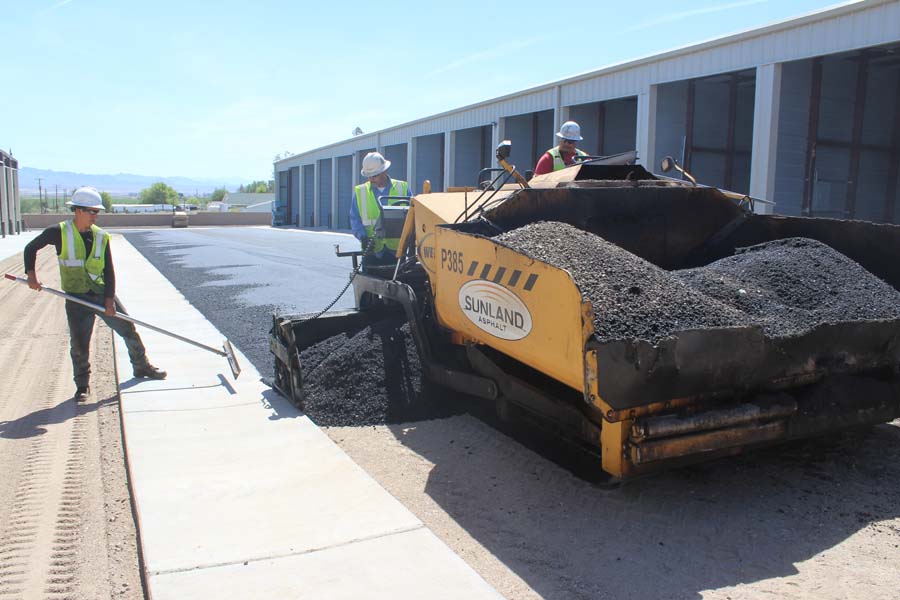Rumored Buzz on A1 Professional Asphalt & Sealing Llc
Rumored Buzz on A1 Professional Asphalt & Sealing Llc
Blog Article
Get This Report on A1 Professional Asphalt & Sealing Llc
Table of ContentsWhat Does A1 Professional Asphalt & Sealing Llc Do?Some Known Details About A1 Professional Asphalt & Sealing Llc 7 Easy Facts About A1 Professional Asphalt & Sealing Llc DescribedA1 Professional Asphalt & Sealing Llc Things To Know Before You Get ThisUnknown Facts About A1 Professional Asphalt & Sealing Llc

The oil in a car engine is not just oil. It consists of a range of ingredients to enhance the car's performance. These include polymers, thickness modifiers, heat stabilizers, extra lubricants, and wear additives. The REOB has all the additives that were in the waste oil along with the wear metals from the engine (mainly iron and copper).
By making many blends utilizing various REOB examples and different asphalt binders, the variants greatly can be averaged out. Numerous States supplied examples of well-known REOB composition to TFHRC researchers, who assessed the examples to contrast the percentage of added (understood) REOB to the discovered (examined) quantity. The analyses showed an equivalent percentage of included and discovered REOB.
How A1 Professional Asphalt & Sealing Llc can Save You Time, Stress, and Money.
They received an overwhelming feedback. The TFHRC scientists analyzed 1,532 examples from 40 States, one Canadian province, and two Federal Lands Highway departments. They examined each example twiceamounting to even more than 3,000 evaluations. None of those States understood that the asphalt they were purchasing had REOB. One State urged its samples had no REOB.
Of the 1,532 examples checked, 12 percent contained REOB, and some consisted of significantly high degrees of it at 1020 percent. The highest possible level was 34 percent in an example from Texas, which TxDOT had actually made use of in a patching compound. This testing also exposed the presence of phosphoric acid in 11 percent of the samples, and 2 percent included ground tire rubber.
Two years back at TRB's yearly meeting, the Federal scientists held an REOB workshop and offered the findings of their laboratory assessments to a standing room-only group. Although some companies do not especially ban REOB, they do enforce physical tests that prevent its useeffectively a ban. asphalt paving repairs. Others do not ban it by spec, but have contracts with asphalt providers to prevent the use of REOB
Little Known Facts About A1 Professional Asphalt & Sealing Llc.
A handful do permit REOB, some within particular limitations. Ohio and Texas limit degrees to much less than 5 percent of the asphalt. To develop a trustworthy examination method that all States can utilize, the TFHRC scientists established a round-robin test plan. The participants are 11 State highway companies (Illinois, Massachusetts, Minnesota, Mississippi, Montana, North Carolina, Oklahoma, South Carolina, Texas, Vermont, and Wyoming), 2 independent screening laboratories, the Ministry of Transportation in Ontario, Queen's College in Ontario, and an Ontario paving professional.
In total amount, the scientists prepared and delivered 720 blends. The individuals are examining the examples independently using the guidelines offered by the TFHRC researchers. The round-robin screening is virtually finished, and TFHRC is in the process of collecting the results. The output will certainly be a recommended AASHTO examination technique that any State can adopt and make use of (a1 asphalt).
The pavement with REOB, which lies 0.6 mile (1 kilometer) from the sidewalk without REOB, has identical subgrade, website traffic thickness, and climate. The segment of Highway655 with 5 to 10 percent REOB revealed significant cracking. In this instance, the presence of REOB was the determined cause of fracturing at a low temperature levels.
"In our experience in Canada, also little amounts of 23 percent can be a problem." Similarly, an area of test sidewalk in Minnesota (MN1-4) found to have REOB likewise cracked too soon. The sidewalk performed well for the very first 3 to 4 years, yet then started to crack. This pavement is also based on low temperatures.
Our A1 Professional Asphalt & Sealing Llc Statements
The tests were not comprehensive, but they revealed that at levels of 6 percent or more, the tensile stamina of the asphalt went down considerably. At a degree of 3.5 percent REOB, the variation in the physical examination techniques was more than the result of REOB. In truth, it was challenging for scientists to examine whether REOB existed.

One binder specification considered is the difference in between the low temperature level crucial specification temperature level for tightness (S) in the flexing beam of light rheometer and the bending beam rheometer creep incline (m-value) noted as Tcritical. TC = TC (S) TC (m-value). Examination of this criterion is still recurring. 2 independent study teams, one from AASHTO and the various other from the Asphalt Institute, wrapped up that even more research study is needed on the usage of REOB in asphalt.
Formerly, all asphalt screening gauged engineering residential or read review commercial properties such as tightness. These examinations do not reveal what materials had been included to the asphalt.

The smart Trick of A1 Professional Asphalt & Sealing Llc That Nobody is Talking About
These results show there are weaknesses in the standard design screening protocols that may be exploited. The producer might have an economic benefit and the product passes all the standardized tests, but the product might not be beneficial to guaranteeing lasting efficiency. To resolve this issue and the expansion of new asphalt additives and extenders, TFHRC is starting a research program to make use of portable spectroscopic gadgets, x-ray fluorescence spectroscopy, and Fourier transform infrared spectroscopy to enable evaluations to be performed in the field rather than needing to take samples back to the lab.
Report this page